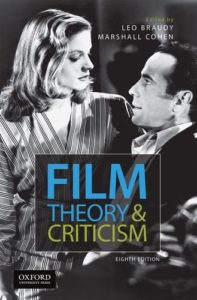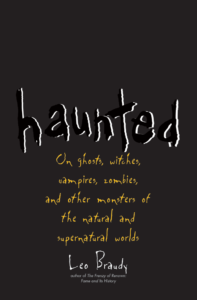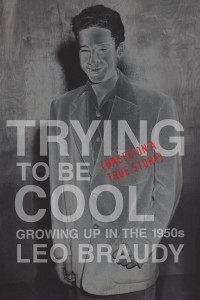I have two new books: Haunted: On Ghosts, Witches, Vampires, Zombies, and Other Monsters of the Natural and Supernatural Worlds and Film Theory and Criticism: Introductory Readings, 8th Edition. Both are currently available for purchase online at Amazon.com and BarnesandNoble.com.
Category Archives: Publications
New Book, “Trying to be Cool: Growing Up in the 1950s”
Contribution to the Los Angeles Times Feature “Educating a Leader”
The Los Angeles Times invited Leo Braudy to offer his book recommendations to the 2012 presidential candidates (Barack Obama and Mitt Romney) for the feature “Educating a Leader” published August 19, 2012. Follow the link to read the piece.
Five Best Books About Hollywood in the Wall Street Journal
The Wall Street Journal featured Braudy’s top Hollywood book picks in the article “Five Best: Leo Braudy on Books About Hollywood” on May 4, 2012. Follow the link to read the article on the WSJ website.
Article on the History of Los Angeles in the Los Angeles Times
The Los Angeles Times published the special contribution by Leo Braudy,“Los Angeles has plenty of history, if you look at it” on April 22, 2012. Follow the link to read the article on the LAT website.
Essay published in the Modern Language Association’s PMLA
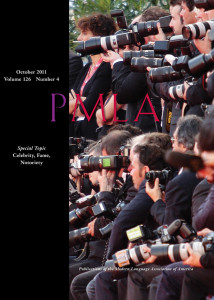
Leo Braudy’s essay, “Knowing the Performer from the Performance: Fame, Celebrity, and Literary Studies,” was published in Volume 126, Number 4 of the Modern Language Association’s (MLA) journal, PMLA. Follow the link to get access to the issue through the MLA’s website.
A Companion to Los Angeles
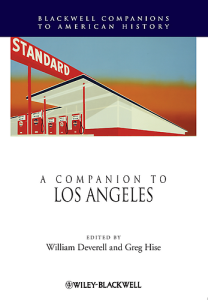
The new cross-disciplinary essay collection, A Companion to Los Angeles, edited by Professor William Deverell of USC, includes an entry by Leo Braudy on “Culture and Communities.”
According to the publisher:
A Companion to Los Angeles is a unique study of America’s second largest city and the first Companion devoted to a single metropolis. The volume consists of 25 essays, each an original contribution by a writer or scholar, which collectively assess the best and most important work to date on the complex history of Los Angeles. The structure of the Companion allows readers to view the emergence of long-term patterns within the history of Los Angeles. Instead of organizing the essays around discrete, time-specific events, the editors focus on critical themes and broad topics including demography, social unrest, politics, popular culture, architecture, and urban studies which span generations and disciplines. Three photographic portfolios, along with the “contemporary voice” essays that conclude each section, complement the historiographic chapters and provide a truly multidimensional view of the city. Together, the contributions constitute a lively and informed introduction to a history as fascinating as it is complex. The Companion will be an invaluable resource for scholars, students, and a general readership eager to situate the history of greater Los Angeles within a larger body of metropolitan studies and the history of the United States itself.
Suburban Knights: A Return the the Middle Ages
Suburban Knights: A Return to the Middle Ages, with an introduction by Leo Braudy, collects photographs and interviews with members of the Society of Creative Anachronism (SCA) conducted between 2003 and 2005 by fine art photographer E.F. Kitchen.
According to Kitchen:
The Society for Creative Anachronism (SCA) is a group devoted to recreating the arts and activities of the Middle Ages in the present. One of their activities is to create large-scale mock wars, in which they wear period armor and engage in physically rigorous combat. Not content to stage polite mock battles, they meet by the thousands on vast fields, wearing full body armor and forcefully striking one another with rattan swords.
From 2003 to 2005, I photographed and interviewed heavy weapons fighters from the SCA on location at the sites where they reenact various battle scenarios. I present them to you here under their SCA names and personas.
To create these images, I used a large-format 8 x 10 camera and then made custom platinum prints from the original negatives. I chose antique photographic equipment and an archival printing method to achieve a look that would be impossible to create using a modern, point-and-shoot camera: the antique lenses have defects that make the images unique, and the platinum prints evoke a certain timelessness with their exceptional detail and rich, expanded tonal scale.
View sample images from the book at Kitchen’s website.
You can purchase a copy through Amazon and Powerhouse Books.
The Hollywood Sign: Fantasy and Reality of an American Icon
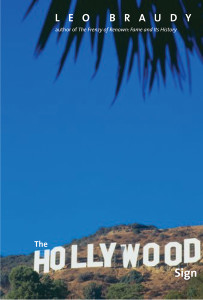 Yale University Press will publish The Hollywood Sign: Fantasy and Reality of an American Icon in February 2011.
Yale University Press will publish The Hollywood Sign: Fantasy and Reality of an American Icon in February 2011.
This video, produced for the University of Southern California, features a reading from the section on Peg Entwhistle’s suicide accompanied by some beautiful archival images, as well as a discussion of the book and of Leo Braudy’s teaching at USC.
Constructing Charisma Now Available
 Constructing Charisma: Celebrity, Fame, and Power in Nineteenth-Century Europe, a collection of essays edited by Edward Berenson and Eva Giloi, is now available from Berghahn Books.
Constructing Charisma: Celebrity, Fame, and Power in Nineteenth-Century Europe, a collection of essays edited by Edward Berenson and Eva Giloi, is now available from Berghahn Books.
Leo Braudy’s essay “Secular Anointings: Fame, Celebrity, and Charisma in the First Century of Mass Culture” provides the book’s conclusion.
Berghahn describes the anthology this way:
Railroads, telegraphs, lithographs, photographs, and mass periodicals—the major technological advances of the 19th century seemed to diminish the space separating people from one another, creating new and apparently closer, albeit highly mediated, social relationships. Nowhere was this phenomenon more evident than in the relationship between celebrity and fan, leader and follower, the famous and the unknown. By mid-century, heroes and celebrities constituted a new and powerful social force, as innovations in print and visual media made it possible for ordinary people to identify with the famous; to feel they knew the hero, leader, or “star”; to imagine that public figures belonged to their private lives. This volume examines the origins and nature of modern mass media and the culture of celebrity and fame they helped to create. Crossing disciplines and national boundaries, the book focuses on arts celebrities (Sarah Bernhardt, Byron and Liszt); charismatic political figures (Napoleon and Wilhelm II); famous explorers (Stanley and Brazza); and celebrated fictional characters (Cyrano de Bergerac).
The book is available directly from the publisher at a 15% discount, or through Amazon.
You can also preview the book through Google:

